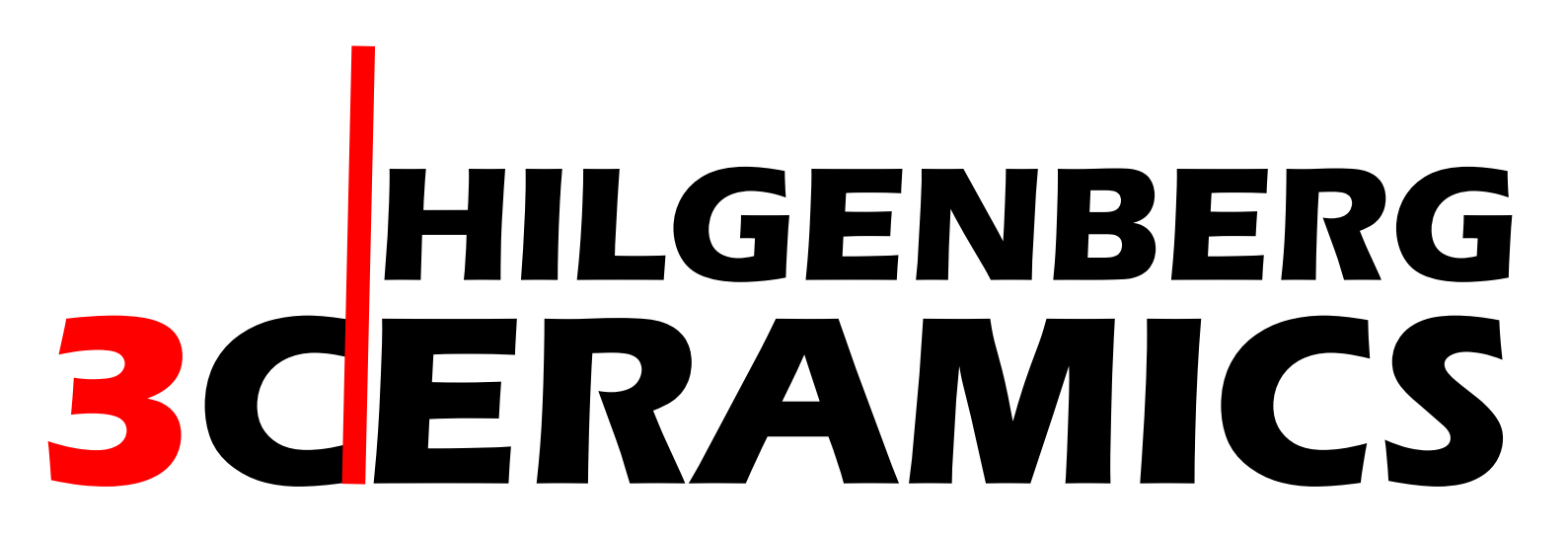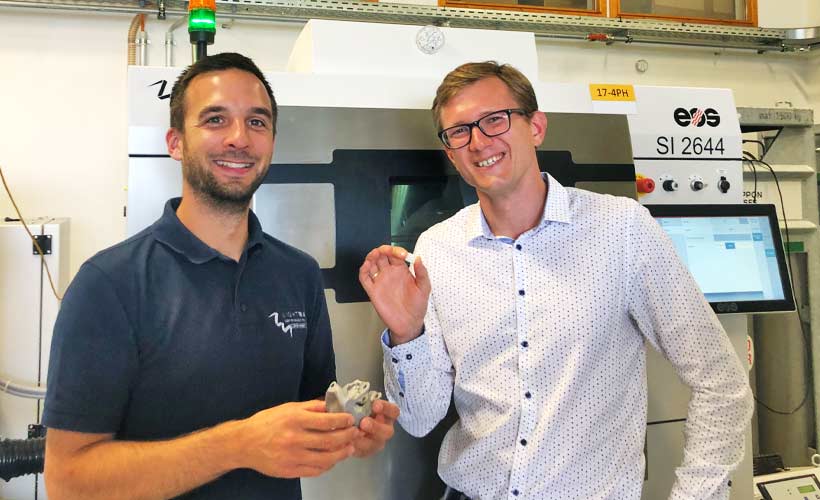The trend in customer inquiries is increasingly moving toward system solutions that have to meet complex, individualized requirements. This calls for deep technical know-how and a degree of scientific creativity on the part of manufacturers. Since each material on its own has clear limitations, Lightway and Hilgenberg-Ceramics are convinced that combining metal and ceramic is the key to meeting the increasingly complex material demands of modern industry and research. This becomes evident when you consider the strengths of both material classes:
-
Ceramic 3D Printing: This technology enables the production of complex, intricate components with exceptional properties such as extremely high hardness and abrasion resistance, along with stability at temperatures up to 2000 °C. Technical ceramics can also withstand strong alkalis and acids, are non-magnetic, and serve as excellent electrical insulators.
-
Metal 3D Printing: Metal additive manufacturing allows for much larger components (while still maintaining complex geometries) by building on well-established metal processing techniques. Depending on the alloy used, metals offer a wide range of material properties and are ideal for many highly dynamic applications. Additionally, 3D printing in metal enables innovative surface textures and the creation of nested or interlocking shapes that would be impossible with traditional fabrication.
By partnering together, the two companies also hope to accelerate the development of digital tools such as data pre-processing software, quality control (QC) systems, and online configurators. In the future, customers can expect components and machinery with a level of precision and customized functionality not previously seen on the market.
One example:
For a laser welding application, a 3D-printed metal robotic arm was produced, and at its tip a pair of ceramic 3D-printed grippers made from high-purity aluminum oxide were attached. The aluminum oxide ceramic grippers easily withstand the intense temperatures of laser welding (up to approx. 1600 °C) and, due to the material’s low thermal conductivity, they do not transfer heat to the metal arm. The combined metal-ceramic component thus offers the customer a unique functionality and significantly extends the service life of the tool. This example demonstrates how the innovative combination of metal and ceramic in additive manufacturing elevates 3D printing to a new level, enabling entirely new components that were previously impossible to produce.
Thomas Hilger says about the cooperation:
“LIGHTWAY’s philosophy from the beginning has been to offer our customers more than just standard solutions. We strive to master technical challenges in additive manufacturing! Through this collaboration with Hilgenberg-Ceramics, we can now incorporate technical ceramics into our portfolio and provide our customers with added value.”
Alex Hilgenberg shares this enthusiasm:
“In intensive discussions with LIGHTWAY, we quickly realized that we share a common vision for the future of 3D printing. By pooling our expertise, we can develop solutions much faster and far more effectively.”
Facts about Lightway GmbH & Co. KG
-
Founded: 2016 by Pascal Schäfer and Thomas Hilger; based in Niederzissen, Germany.
-
Core Expertise: Since its founding, the company has continually expanded its expertise in additive manufacturing, as well as in the development and design of high-performance components for mechanical engineering and aerospace applications.
-
Selective Laser Melting (SLM): Quickly established a strong reputation in its core business of SLM metal 3D printing, serving customers across a wide range of industries— including machinery and plant engineering, electrical engineering, automotive, toolmaking, aerospace, and medical technology.
-
Full-Service Provider: Uniquely offers the complete process chain in-house, from the initial idea and design all the way to series production.
Facts about Hilgenberg-Ceramics GmbH & Co. KG
-
Founded: 2019 by Alex Hilgenberg; based in Höhr-Grenzhausen, Germany.
-
Specialization: Focused on additive manufacturing of technical ceramics using stereolithography, with an emphasis on small, complex, and finely detailed components.
-
Service Strength: Provides comprehensive support in developing new products or adapting existing components for ceramic 3D printing, with high flexibility and reliable on-time delivery.

